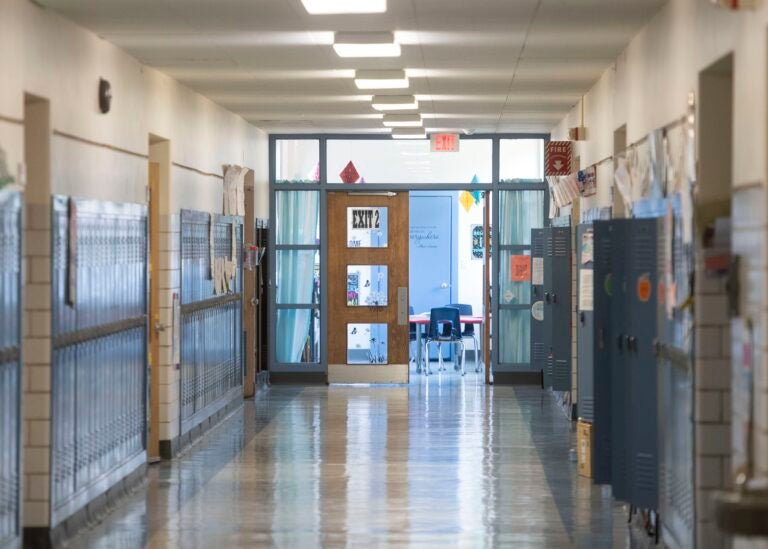Philadelphia schools see gains in student reading performance
Thirty-one percent of public school students in grades 3-8 scored at or above benchmark on the Star Assessment in winter 2023-24, a 2% increase from winter 2022-23.

(Nate Smallwood for Spotlight PA)
This story originally appeared in The Philadelphia Tribune.
Philadelphia’s public school students in grades 3-8 have increased their reading performance from last year, according to the district’s latest progress-monitoring report.
Thirty-one percent of students scored at or above benchmark on the Star Assessment in winter 2023-24, a 2% increase from winter 2022-23.
The percentage of third-grade students who scored at or above reading level on the benchmark rose from 33% in winter 2022-23 to 35% during winter 2023-24.
“Students start out lower in the fall and there’s an increase in the percentage scoring at or above proficient in the winter,” said Tonya Wolford, chief of evaluation, research and accountability for the school district.
“This year, 27.5% of students were at the benchmark in ELA in the fall and over 31% of students scored at the benchmark in the winter,” she said. “This is almost a four percentage increase over the year, which is higher than previous years going from fall to winter.”
According to the report, students in grades 3-8 who have higher attendance are more likely to be at or above reading level. Nearly 35% of students who had 90% or more attendance were at benchmark.
For students with 80-90% attendance, 21% of them were at or above benchmark. For the group of students that attended less than 80% of the time, only 16% of them were at or above benchmark.
“We’re seeing the same thing here that we saw for math,” Wolford said. “In the students that have less than 80% attendance, almost 60% of them are in intensive intervention.
“For grade three students, we see almost an identical pattern,” she said. “In this case, 38% of students who attend 90% or more are at benchmark in contrast to roughly 20% who attend less than 80% of the time.”
District officials disclosed the information during a recent school board meeting. The data is based on a test the district uses to identify students who are meeting grade and term level benchmarks in literacy and math.
Students take at least three benchmarks throughout the school year with screening periods being in the fall, winter and spring.
District officials also looked at students with disabilities who scored proficient or advanced on the Pennsylvania System of School Assessment, also called the PSSA, or the Pennsylvania Alternate System of Assessment, which is an alternative test that students with disabilities take.
Nearly 13.4% students with high incidence disabilities scored proficient or advanced on the assessments and 10.2% of students with low incidence scored proficient or advanced on the tests.
“Our Office of Research and Evaluation looked at the reading performance for students with IEP,” Wolford said. “We found that the percentage of students going proficient or advanced on assessments vary greatly by primary disability type and range from 4% to 34%.
“Primary disabilities can be grouped by high incidence,” she added. “These are disabilities that are common among the student population, which includes students with autism, speech or language impairment. We also looked at students with low incidence disabilities, which include hearing impaired, visual impairment and other multiple disabilities.”
Board of Education member Leticia Egea-Hinton said she was encouraged by the data.
“I’m very excited about what I see in the numbers,” she said. “I know that board member Thompson always brings up students with IEPs and English language learners. It’s good to see them included in this report.”
Board members asked district officials about the transition of students from third to fourth grade in reading and how that move affects the way students read as they progress in their education.
Jermaine Dawson, deputy superintendent of academic services for the school district, said the transition for students in reading is largely in part from students going from learning to read to reading to learn.
“In grades K-3 students are spending a lot of time building the skills and muscles to recognize the words, once they get to fourth grade,” Dawson said. “The assumption in every state is that the students have learned how to read by third grade, so the text starts to take off and the Lexile levels start to increase.
“The assumption is that students are able to read, decode those words and to make sense of the text,” he said. “A lot of that also is the shifting from what we call literary fictional texts to nonfiction. Our students love fiction, folktales and storytelling. Now they are starting to get into read texts and for some students it’s an adjustment.”
Dawson said what may help students continue their love for reading as they get older are texts that reflect the student body.
“If they’re reading about cowboys in Idaho, it’s not relevant to our kids at all,” he said. “If I’m looking at text and I’m comparing it to myself and the world around me, but it’s not reflective of me, then I lose that level of engagement. We can’t let that happen to our students. It’s important that our students have texts that reflect them.”
WHYY is your source for fact-based, in-depth journalism and information. As a nonprofit organization, we rely on financial support from readers like you. Please give today.






